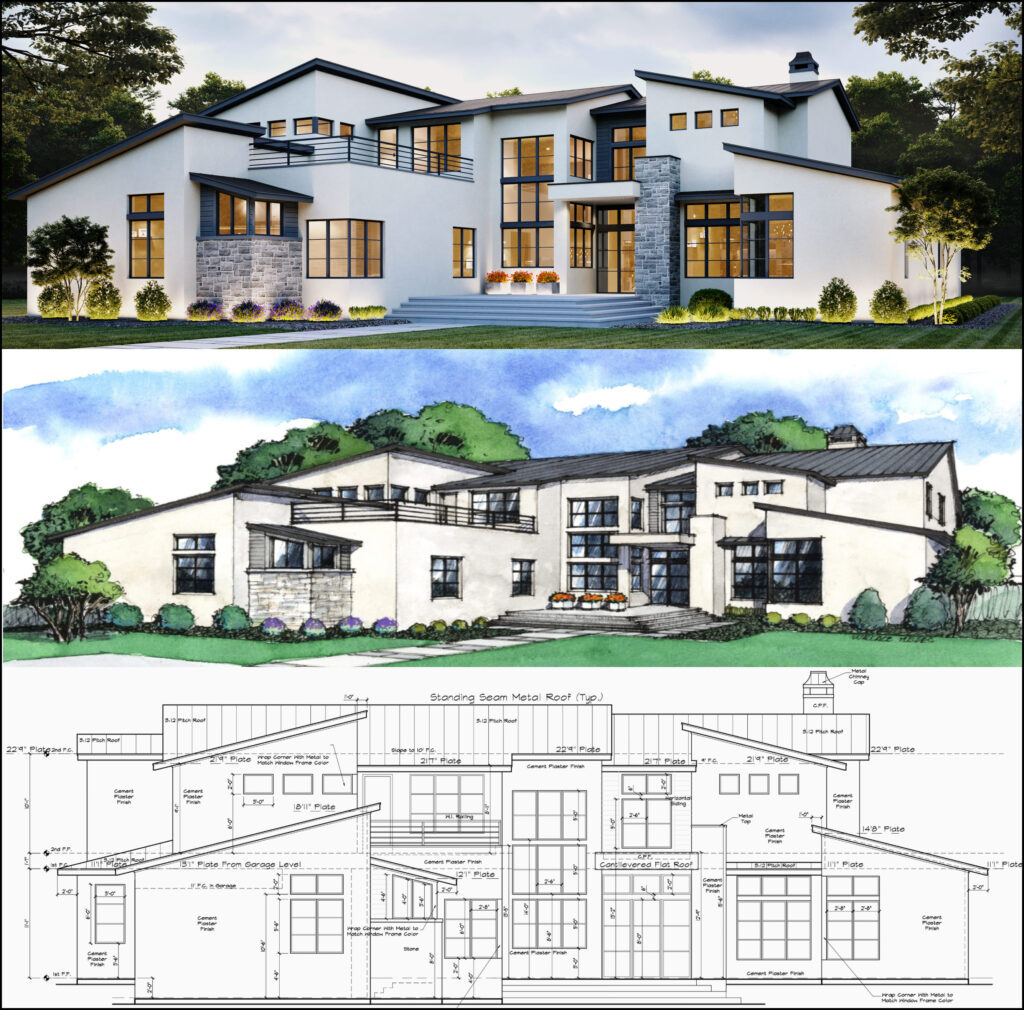Exactly How CDA Architects Integrate Eco-Friendly Practices in Architectural Projects
Exactly How CDA Architects Integrate Eco-Friendly Practices in Architectural Projects
Blog Article
A Comprehensive Summary of Architectural Designs and Their Influence on Modern City Planning and Growth
Architectural designs have actually long offered as a mirror to the social values and technical improvements of their time, playing an important role in shaping contemporary city planning and development. From the majesty of Neoclassicism to the practical method of Brutalism, each style has introduced special principles that influence city looks and functionality.
Historical Overview of Architectural Styles

As societies transitioned with the Center Ages, Gothic architecture emerged, characterized by its verticality and intricate outlining, mirroring the spiritual goals of the age. The Renaissance marked a revival of classic ideals, merging art and style in innovative manner ins which influenced subsequent styles throughout Europe.

Today, architectural designs proceed to develop, driven by globalization and sustainability worries, reflecting a dynamic interaction in between heritage and technology. This historical review emphasizes the relevance of architecture as a mirror of societal evolution and as a stimulant for urban advancement.
Trick Architectural Styles Explained
The variety of building styles reflects the myriad impacts that form our constructed atmosphere, each symbolizing distinct characteristics and social values. Trick architectural designs consist of Timeless, Gothic, Baroque, Innovation, and Postmodernism, each standing for special historic contexts and aesthetic ideologies.
Classic design, rooted in ancient Greece and Rome, highlights symmetry, proportion, and the use of columns (cda architects). On the other hand, Gothic design, thriving in the center Ages, is defined by pointed arcs, ribbed vaults, and flying buttresses, creating a spiritual top quality in sanctuaries. Baroque design, arising in the 17th century, is noted by majesty, fancy decoration, and a dynamic interaction of light and darkness
Modernism, which obtained energy in the early 20th century, prioritizes function over type, making use of brand-new materials like steel and glass to create minimal frameworks. Postmodernism, reacting against the austerity of Innovation, welcomes eclecticism and historical referral, usually incorporating lively aspects and irony.

Effect On Urban Preparation
In shaping the advancement of cities, building designs substantially affect city preparation decisions. The choice of architectural style often determines the aesthetic appeals, functionality, and total character of urban environments.
Additionally, building designs can influence zoning guidelines and land make use of plans. i thought about this Urban organizers should take into consideration the prevailing building patterns when making areas, making certain that visit this website brand-new advancements balance with existing structures. This consideration fosters natural metropolitan landscapes and enhances area identification.
The application of details building styles can also influence socioeconomic variables within a city. Premium contemporary styles may attract wealthy residents and organizations, leading to gentrification, while much more cost effective housing options could focus on sensible and lasting styles to fit varied populations. cda architects. Inevitably, the interaction in between building designs and metropolitan planning produces vibrant cities that reflect both historic context and modern needs, shaping the lived experiences of their citizens
Sustainability and Modern Architecture
Architectural styles play a critical function in dealing with modern difficulties, especially in the realm of sustainability. As city areas expand and ecological worries increase, modern design progressively accepts sustainable style principles that focus on power efficiency, source conservation, and marginal ecological impact.
Contemporary building activities, such as biophilic design and eco-friendly style, supporter for structures that harmonize with their environments, using all-natural materials and promoting biodiversity. These styles usually integrate renewable resource sources, such as photovoltaic panels and wind generators, to minimize dependence on nonrenewable fuel sources and lower carbon impacts.
Moreover, the integration of sophisticated modern technologies, such as smart structure systems, improves energy monitoring, enhancing resource use while guaranteeing owner convenience. Ingenious water monitoring techniques, including rainwater harvesting and greywater recycling, additional contribute to lasting urban settings.
Especially, sustainability expands beyond ecological concerns; it encompasses social and economic dimensions. By fostering neighborhood health and advertising inclusivity, modern building styles straighten with lasting development goals. The advancement of building Resources techniques continues to form durable cities that not just satisfy the demands of the present yet likewise protect the future for generations to come.
Area Involvement in Style
Area interaction in layout works as a critical bridge between architects and the populations they serve, making certain that the constructed environment shows the requirements and ambitions of its individuals. This collaborative procedure invites neighborhood participants to contribute their insights and preferences, promoting a feeling of possession and duty toward the areas they populate.
Effective neighborhood engagement employs different approaches, such as workshops, studies, and public discussion forums, to gather diverse point of views. These methods help with a two-way dialogue, enabling architects to comprehend regional contexts while empowering locals to voice their problems and needs. This inclusivity not just enhances the layout quality however also advertises social equity by attending to the distinct challenges faced by marginalized teams.
Furthermore, community engagement can bring about innovative solutions that may not emerge in a standard style procedure. By incorporating local expertise and social worths, engineers can produce rooms that reverberate even more deeply with customers, improving use and sustainability. Inevitably, focusing on area interaction in layout procedures leads to settings that nurture social communications, assistance wellness, and enhance community ties, thus playing a crucial function in forming modern-day city landscapes.
Final Thought
Building designs have actually exceptionally influenced modern city preparation and development, reflecting advancing cultural and technological contexts. As cities proceed to grow and adjust, the recurring discussion between architectural heritage and contemporary layout concepts will certainly continue to be crucial in creating inclusive, vibrant areas that improve top quality of life and promote social equity.
Report this page